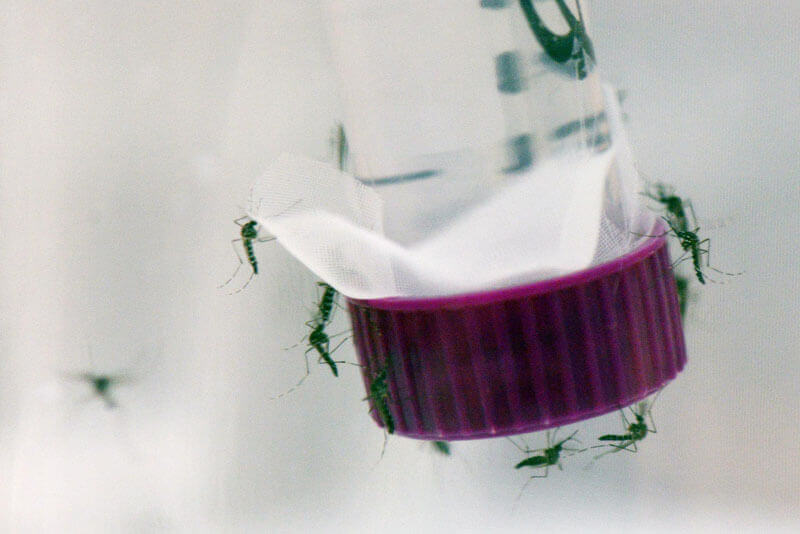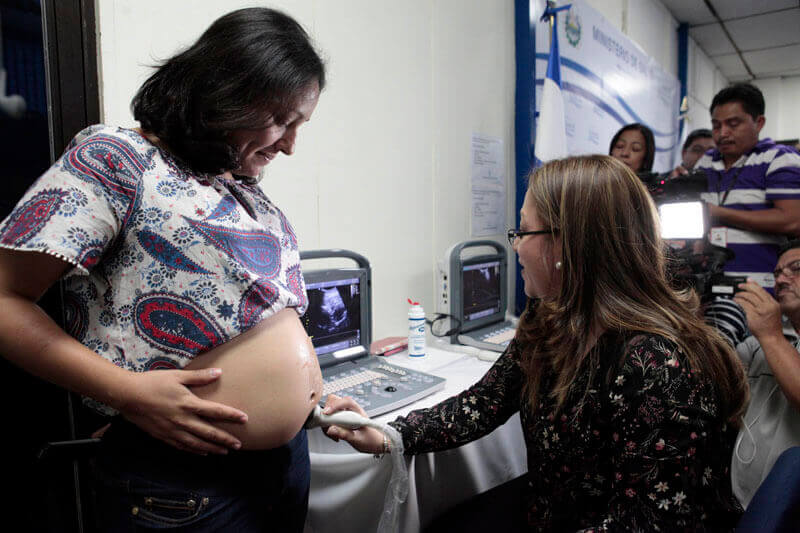 Aedes aegypti mosquitoes which carry Zika. Photo: Dean Calma/IAEAApril showers bring standing pools of water, the onset of mosquito season, and a new wariness of getting bitten. In 1999, we were caught off guard when
the West Nile virus first appeared in North America. In 2010, an outbreak of dengue fever spread locally in Florida after an absence of 60 years. In
2014, chikungunya first arrived in the United States after travelling breathtakingly fast through the Western hemisphere. Now, in 2016, Zika virus
is the latest mosquito-borne disease to threaten Americans. Yet our collective national response continues to be one of short-term planning rather
than long-term preparedness.
Aedes aegypti mosquitoes which carry Zika. Photo: Dean Calma/IAEAApril showers bring standing pools of water, the onset of mosquito season, and a new wariness of getting bitten. In 1999, we were caught off guard when
the West Nile virus first appeared in North America. In 2010, an outbreak of dengue fever spread locally in Florida after an absence of 60 years. In
2014, chikungunya first arrived in the United States after travelling breathtakingly fast through the Western hemisphere. Now, in 2016, Zika virus
is the latest mosquito-borne disease to threaten Americans. Yet our collective national response continues to be one of short-term planning rather
than long-term preparedness.
Since Zika virus arrived in the Americas in May 2015, there has been an alarming spike in reports of birth defects such as microcephaly, particularly in
Brazil. Zika infection has also been linked to adverse pregnancy outcomes and Guillain-Barré syndrome—a temporary paralysis that can prove deadly.
The World Health Organization has declared Zika a Public Health Emergency.
The virus has now spread to 26 countries, including 312 travel-associated cases in the United States. So far, mosquitoes in the United States haven’t infected anyone, but the Centers for Disease Control and Prevention (CDC) just
issued a revised map that shows the mosquitoes that carry this virus and others
can be found across the Southern tier of the United States all the way up to southern New England on the East Coast.
Faced with this chilling situation, we don’t have ready the tools we need to fight Zika. Just like with Ebola, crucial tools did not exist or were still
under development when the outbreak began. R&D is urgently needed to understand the Zika virus and its associated health conditions, and develop
new diagnostics, vaccines, or other treatments to combat it.
 A pregnant woman in El Salvador receives an ultrasound as part of the country's response to the Zika outbreak. Photo: Office of the President of El Salvador
A pregnant woman in El Salvador receives an ultrasound as part of the country's response to the Zika outbreak. Photo: Office of the President of El Salvador
Today, the Band-aid approach of emergency funding is the only option available to mitigate the crisis. We applaud President Obama’s call for accelerated
research efforts, and the need to inform Americans about how to protect themselves, which the CDC has been quick to do. The National Institute of Allergy
and Infectious Diseases, led by Dr. Anthony Fauci, has also called for a “full court press” on research.
This requires increased funding for those searching for ways to stop this virus. Diverting resources from the Ebola response, however, is short-sighted.
Those efforts are just beginning to show the promise of new diagnostics, advanced therapeutics, and more resilient health systems in Ebola-affected
countries. Redirecting funding before the job is finished is dangerous, and will most certainly leave the United States and the world unprepared for
the next Ebola outbreak.
The fact remains that this long-standing patchwork approach to global health R&D funding only degrades our ability to respond to the guaranteed next
global health crisis. With more than 500 mosquito-borne diseases across this globally interconnected world, the question is not if but when we see
another virus or disease.
Just as we need primed and ready firehouses and firefighters, we need a primed and ready research infrastructure. That requires a prioritized agenda and
sufficient funding. America’s “firehouses and firefighters” are the National Institutes of Health, CDC, President’s Malaria Initiative and the Army
and Navy’s tropical infectious disease programs.
Global health means everyone’s health. It’s time US policymakers stop funding by crisis and commit to sustainable, long-term investment in global health
R&D so the most effective health solutions are available when they are needed.
Stephen Higgs, PhD, FRES, FASTMH is the president of the American Society of Tropical Medicine and Hygiene and a professor at Kansas State University.
Erin Will Morton, MA is director of the Global Health Technologies Coalition, a group more than 25 nonprofits that work to save and improve lives by encouraging the research and development of essential health technologies.


